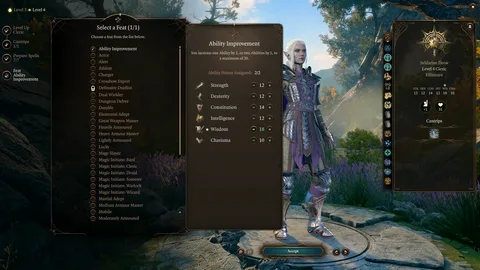When playing a Ranger in Dungeons & Dragons 5th Edition (D&D 5e), the choice of 1st-level spells is crucial. These spells can define your character’s combat style, utility, and overall effectiveness. Among the various options available, Ensnaring Strike is a spell that often catches the attention of players due to its unique ability to restrain enemies. But how does it compare to other 1st-level Ranger spells? In this article, we’ll delve into the intricacies of Ensnaring Strike, comparing it with other 1st-level Ranger spells to help you make an informed decision for your character.
Understanding D&D 5e Ensnaring Strike
What is Ensnaring Strike?

Ensnaring Strike is a 1st-level concentration spell that requires a bonus action to cast. When you hit a creature with a weapon attack after casting this spell, thorny vines attempt to ensnare the target. The creature must succeed on a Strength saving throw or become restrained. While restrained, the target takes 1d6 piercing damage at the start of each of its turns. The spell ends if the creature frees itself or if your concentration is broken.
Strengths of Ensnaring Strike
One of the primary advantages of Ensnaring Strike is its ability to immobilize enemies, particularly those that rely on mobility or melee combat. The restraint effect not only limits their movement but also imposes disadvantage on their attack rolls, making them vulnerable to your allies’ attacks. Additionally, the ongoing damage can steadily wear down tougher opponents.
Limitations of Ensnaring Strike
While Ensnaring Strike offers significant tactical advantages, it also has limitations. The spell requires concentration, meaning it competes with other concentration spells and can be interrupted. Additionally, the effectiveness of Ensnaring Strike heavily depends on the target’s Strength saving throw. Against creatures with high Strength, this spell may frequently fail, reducing its overall utility.
Comparing Ensnaring Strike to Other 1st-Level Ranger Spells

Hunter’s Mark
Overview
Hunter’s Mark is one of the most iconic Ranger spells in D&D 5e. When you cast it as a bonus action, you mark a target, dealing an extra 1d6 damage whenever you hit it with a weapon attack. Moreover, if the target drops to 0 hit points, you can transfer the mark to another creature using a bonus action.
Strengths of Hunter’s Mark
Hunter’s Mark excels in scenarios where consistent damage output is needed. The additional damage applies to every attack, making it particularly potent for Rangers who rely on multiple attacks. The spell also lasts up to an hour with concentration, allowing it to remain active across several encounters.
Comparison to Ensnaring Strike
While Ensnaring Strike provides crowd control, Hunter’s Mark is a more straightforward damage boost. Hunter’s Mark is generally more reliable, especially against a single target, as it doesn’t require a saving throw. However, it lacks the control and strategic impact that Ensnaring Strike offers. If your priority is dealing more damage, Hunter’s Mark is often the superior choice, but if you need to control the battlefield, Ensnaring Strike can be more effective.
Hail of Thorns
Overview
Hail of Thorns is another 1st-level Ranger spell that enhances your weapon attacks. Upon hitting a target with a ranged weapon attack, the spell causes a rain of thorns to explode from the point of impact, forcing all creatures within 5 feet of the target to make a Dexterity saving throw or take additional piercing damage.
Strengths of Hail of Thorns
Hail of Thorns is an excellent choice for Rangers looking to deal area-of-effect (AoE) damage. It’s particularly useful when facing groups of clustered enemies, providing a way to damage multiple foes simultaneously. The spell also scales well, increasing damage when cast with higher-level spell slots.
Comparison to Ensnaring Strike
Hail of Thorns and Ensnaring Strike serve different purposes. While Ensnaring Strike focuses on controlling a single target, Hail of Thorns is designed for damaging multiple enemies. If you often face groups of weaker enemies, Hail of Thorns can be invaluable. However, if controlling a dangerous opponent is more crucial to your strategy, Ensnaring Strike may be the better option.
Zephyr Strike
Overview
Zephyr Strike is a versatile spell that offers both mobility and offensive power. When you cast Zephyr Strike, your movement speed increases by 30 feet, and your movement doesn’t provoke opportunity attacks for up to 1 minute. Additionally, you can choose to make one attack with advantage during this duration, adding 1d8 force damage to the attack.
Strengths of Zephyr Strike
The primary strength of Zephyr Strike lies in its flexibility. The increased speed and the ability to avoid opportunity attacks make it perfect for hit-and-run tactics. The added advantage and damage on a single attack can also turn the tide in critical moments, allowing you to land a powerful blow when needed.
Comparison to Ensnaring Strike
Zephyr Strike and Ensnaring Strike cater to different playstyles. Zephyr Strike is ideal for Rangers who value mobility and prefer to stay on the move, while Ensnaring Strike is more suited to those who want to control the battlefield by immobilizing key targets. If your Ranger relies on maneuverability and strategic positioning, Zephyr Strike may be more useful. On the other hand, if you need to lock down a dangerous foe, Ensnaring Strike is the better choice.
Choosing the Right Spell for Your Ranger
Assessing Your Playstyle
When deciding between Ensnaring Strike and other 1st-level Ranger spells, consider your playstyle and the typical challenges you face in your campaign. If you often find yourself needing to control the movement of enemies or neutralize specific threats, Ensnaring Strike offers unique advantages. However, if consistent damage, crowd control, or enhanced mobility are more in line with your tactics, spells like Hunter’s Mark, Hail of Thorns, or Zephyr Strike may better suit your needs.
Understanding Party Dynamics
Your choice of spells should also reflect your party composition and strategy. If your party lacks crowd control options, Ensnaring Strike can fill that gap. Conversely, if your group already excels in battlefield control, you might prioritize spells that increase your damage output or improve your mobility.
Key Considerations When Using Ensnaring Strike in D&D 5e

When deciding to use Ensnaring Strike in your D&D 5e campaign, several factors should be taken into account to maximize its effectiveness. First, consider the type of enemies you are facing. Creatures with high Strength scores are more likely to succeed on the saving throw, reducing the impact of the spell. Additionally, since Ensnaring Strike requires concentration, it may conflict with other spells that also need concentration, such as Hunter’s Mark. It’s crucial to assess whether restraining a single target is more valuable to your strategy than maintaining another concentration spell. Lastly, remember that the spell’s effectiveness can be influenced by your environment. Using Ensnaring Strike in tight spaces where movement is limited can amplify its benefits, while in open areas, enemies might have an easier time escaping or avoiding the effect altogether.
